When we build something, we want it to last and be durable, and that is possible only if we use good materials.
Similarly, the coop door sizes you choose for your chickens’ protection should be made of durable materials.
However, the question remains: what are the good materials for a chicken coop door?
Several factors must be considered when choosing a door material, such as which material is durable and which is not prone to pests and insects.
Moreover, it is like building a home for your birds.
However, we have mentioned some materials best suited for a chicken coop door, and you can make a strong home for your chickens.
We have also mentioned the pros and cons of the material to help you evaluate it better.
Tune in to learn everything in detail.
What is the Best Material for a Chicken Coop Door?
The durability and quality of the materials used when constructing a chicken coop are crucial for ensuring long-lasting protection and comfort for your chickens.
Equally important is selecting the right dimensions for your chicken coop door, which should accommodate your chickens comfortably and safeguard them from potential predators.
Below, we discuss various materials that you can choose based on their durability and how these materials align with the ideal door size.
There are so many materials available in the market that you can use to make your chicken coop door.
However, it is very clear that no single material is considered the best one; the change in the climate can damage them all.
Still, you can choose the one that works better in your region.
If you are new to growing chickens, you should surely consult the people who have spent years in this profession.
Below is the list of such materials, pros and cons, that you can use to make the chicken coop door.
1. Wood
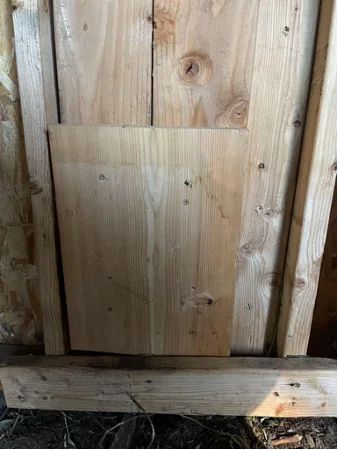
Wood is the most basic and preferred material. It is a traditional and popular material for chicken coop doors.
It provides good insulation and is relatively easy to work with.
Cedar and redwood are excellent choices due to their natural resistance to decay and insects.
However, any treated wood can be suitable if properly sealed to withstand varying weather conditions.
Pros
- Wood provides decent insulation, helping to keep the coop warmer in the winter and cooler in the summer.
- Wood doors can be aesthetically pleasing and blend well with the coop design.
- Wood is easily customizable, allowing you to design the door according to your preferences and needs.
Cons
- To prolong its lifespan, wood requires regular maintenance, including sealing, staining, or painting.
- Quality wood can be relatively expensive, especially with premium types like cedar or redwood.
2. Metal

Metal doors, such as those made of galvanized steel or aluminum, are known for their durability and strength.
They offer excellent protection against predators and can withstand harsh weather conditions.
Metal doors are often used in commercial or larger chicken coops.
Pros
- Metal doors are long-lasting and resistant to weather elements, rust, and corrosion.
- They provide high security against potential predators due to their sturdy structure.
- Metal doors require minimal maintenance compared to wood, usually needing periodic cleaning to remove dirt and grime.
Cons
- Metal can conduct heat and cold, potentially affecting the temperature inside the coop. Insulation might be necessary in extreme climates.
- Quality metal doors can be more expensive than wood, initially adding to the setup costs.
3. Plastic

Plastic doors, often made from high-density polyethylene (HDPE) or other durable plastics, are gaining popularity in chicken coop construction.
They are lightweight, easy to clean, and require minimal maintenance.
Pros
- Plastic doors are easy to clean and resistant to moisture, making them low maintenance.
- They can withstand various weather conditions without deteriorating or rusting.
- The lightweight nature of plastic makes it easy to operate and install.
Cons
- While durable, plastic may not be as robust as metal or wood, making it susceptible to damage from extreme forces or sharp objects.
- Plastic may not provide the best insulation, necessitating additional measures in areas with extreme temperatures.
4. Plywood
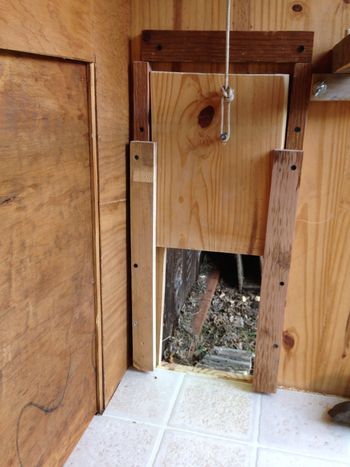
This material is also gaining popularity because of its cost-effective quality.
It’s made by layering thin sheets of wood and adhesive, creating a strong and budget-friendly material.
Plywood can be easily obtained at your local hardware store at affordable rates.
Pros
- Plywood is one of the most budget-friendly options for a chicken coop door.
- Plywood can be quite strong, especially if you opt for marine-grade or pressure-treated plywood.
- Plywood is readily available in various thicknesses and sizes at most hardware stores.
Cons
- Without proper sealing or treatment, plywood may not be highly resistant to moisture and other weather elements.
- While strong, plywood can deteriorate over time if not adequately protected from the elements.
5. Fiberglass
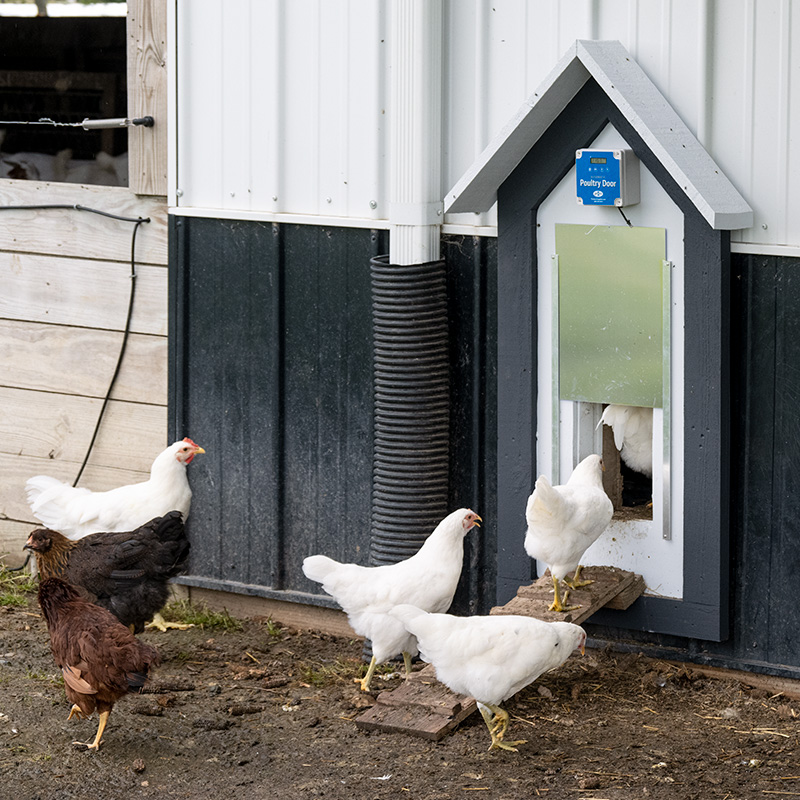
Fiberglass doors are made by layering glass fibers with resin to create a strong, weather-resistant material.
Fiberglass doors can be a good option for chicken coop doors, especially if you prioritize durability.
Pros
- Fiberglass is highly resistant to weather conditions, including moisture, sunlight, and extreme temperatures.
- It is a long-lasting material that can withstand wear and tear over time.
- Fiberglass provides decent insulation, helping to maintain a suitable temperature inside the coop.
Cons
- Fiberglass doors can be more expensive than some other materials, although the investment may be worth it in terms of longevity and performance.
Conclusion
Choosing the right material for your chicken coop door depends on your needs, such as budget, climate, and other requirements.
As we mentioned above, no best material is available in the market as everything has pros and cons.
So, it depends entirely on which material you want to choose to make your chicken coop door.
However, it is best to seek professional help from people who have been in this business for several years.
Also, remember your safety and wear safety gloves while making this coop door for your feathered companions.






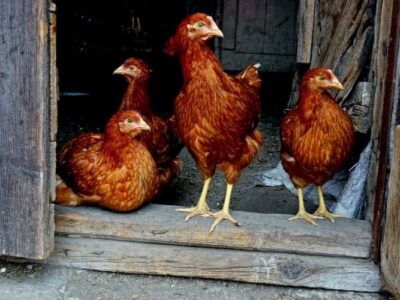
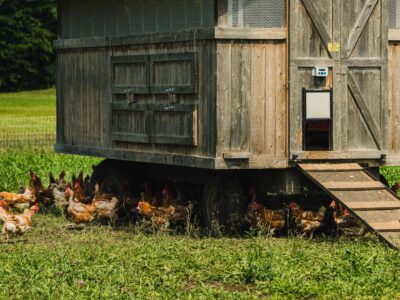
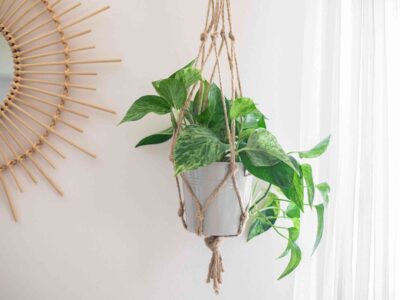

Comments